
A Bomber Command raid Wednesday night against Bremen, Germany’s second-largest seaport, is described by the Manchester Guardian as ‘R.A.F. Answers London Fire Raid‘ (5). The dropping of 20,000 incendiary bombs seems to be the basis for this. Whether the Bremen raid would technically count as a ‘reprisal’ (from the British point of view, anyway) is doubtful since the accompanying article from the Air Ministry News Service — also reprinted in full by The Times (4) — strongly emphasises the military nature of the targets:
The chief objectives of the night were the great shipbuilding yards in which warships of all kinds, and especially submarines, are under construction, the Deutsche Vacuum Oil refinery, railway communications, warehouses beside the harbours, the Gebrüder Nielson rice and starch mills, the Focke-Wulf air frame factory, and many other industrial targets.
All of these targets were reported to have been hit, in some cases very hard. The fires from the Gebrüder Nielson mills could be seen from the Dutch border, and the whole affair was said in one combat report to be ‘Much greater than Mannheim’, the previous benchmark of a successful raid. (The Air Ministry modestly describes this one as a ‘brilliant offensive operation.)
London was bombed again last night, although anti-aircraft guns did not fire until the raid had been in progress for several hours. Other targets may have included ‘an eastern counties town’, ‘a town in south-west England, one in the West Midlands, another in the west, and one in South Wales’. A German aeroplane ‘fired two bursts from its machine-guns on a west of Scotland town yesterday afternoon’, but no damage was sustained other than broken windows and a few bullets ’embedded in brickwork and in a shop sign’. (Neutral Eire was also bombed — presumably accidentally — by ‘unidentified aeroplanes’ — though an incendiary bomb was ‘identified as German’. Three people were killed near Borris.) These reports are not given any particular prominence (admittedly, it could hardly be otherwise given their lack of detail) and so they take on the character of background noise, unless there happens to be a particularly big raid somewhere.
Volunteer firewatchers are enrolling ‘in large numbers’ in response to Morrison’s radio appeal, including ‘many women’ (2). This is despite the fact that the details are still being worked out. For example, how are small businesses to find ‘out of often depleted staffs men or women fit and willing to undertake night duty in the open after an ordinary day’s work’? Some sort of group or pool system may be necessary, as indeed has already been formed in some places. The government has set up a ‘Fire Prevention Executive’ (4) to coordinate the official response to the fire prevention problem, but despite the name it’s not clear what powers it will actually have.
‘Royal Engineers, Pioneers, firemen and demolition squads’ (4) are demolishing now-derelict buildings in the City and clearing away debris. Newgate Street was the scene of one such ‘dynamiting operation’; Aldersgate, Fore Street and London Wall will probably be attended to soon. This clearance work raises an obvious question: what should built in the empty spaces? And even if buildings are repairable, when is it worth doing so? A Times leader-writer has been pondering this question, particularly as it relates to ‘narrow and dreary’ streets of ‘mean’ Victorian buildings, whose ‘styles architecture was allowed to grow up on medieval lines of lanes and alleys’ (5):
An enormous opportunity now arises for a larger and more rational lay-out in the future; the far-seeing Wrens of to-morrow must not be baulked by any obstructive system of land ownership.
This sort of anti-property rhetoric is, of course, to be expected from such a socialistic rag as The Times. But there seems to be plenty of similar sentiment in the letter columns, too: that this calamity should be (in the leader’s words) ‘regarded as offering a chance which otherwise never would have presented itself’. For example, O. M. Venables Argles of Cambridge takes issue with the hope of Dean of St Paul’s that the best of Wren’s churches will be rebuilt ‘”as nearly as possible to Wren’s designs”‘, calling it an ‘act of escapism’. That era is past. After 1666, did Wren himself say: ‘”Let us copy the fine old medieval designs; let us build a replica of the old St. Paul’s.”‘
No, he did not. He struck out in his own way, and founded a new civic architecture, original and beautiful. Let us do the same; let us build churches and civic buildings in the modern manner, to show that the twentieth century is capable of producing its own original works of beauty, without falling back on neo-romantic or neo-classical escapist architecture.
Clough Williams-Ellis has an interestingly different position. He would like to see Wren’s churches rebuilt, but not in their original locations — not, in fact, in London at all. Instead, put them ‘in some provincial city or town that has honourable scars to be healed’, where it would likely be ‘the most gracious, notable, and revered building in the place’.
Decentralization, diffusion, democratization… If the enemy’s bombs serve to disperse this cultural heritage more widely and more effectively over our country at large, there will at least be a credit side to the account.
The day before yesterday, The Times looked at the future of British aircraft; today it’s the turn of German aircraft — at least if ‘German propagandists’ (4) are to be believed. They claim that
Germany now possesses a silenced motor for use in bombers and a new type of bomber made of a transparent material called mika, which renders it almost invisible from the ground, even from a comparatively low height.
The silent engine is also to be used in speedboats, ‘which may permit an attempt to invade Britain this winter’.
An attack with many squadrons of silent bombers and a simultaneous dash across the Channel or the North Sea by an armada of speedboats would be the first space.
The transparent bomber is ‘said to be a Junkers’ and have a maximum speed of 390 mph.
Yes, if you are a ‘younger man not yet called up for service’ (7), ask yourself, do I want to be sent to a near-certain death in a Fairey Battle? If so, you should have volunteered for the RAF last year.
![]() This work is licensed under a Creative Commons Attribution-NonCommercial-NoDerivatives 4.0 International License.
Permissions beyond the scope of this license may be available at http://airminded.org/copyright/.
This work is licensed under a Creative Commons Attribution-NonCommercial-NoDerivatives 4.0 International License.
Permissions beyond the scope of this license may be available at http://airminded.org/copyright/.


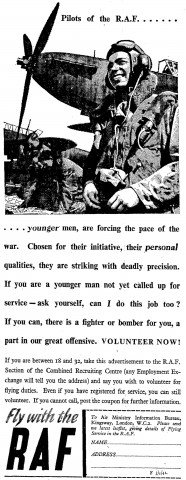
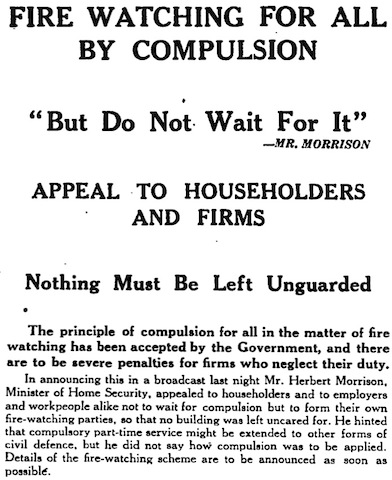
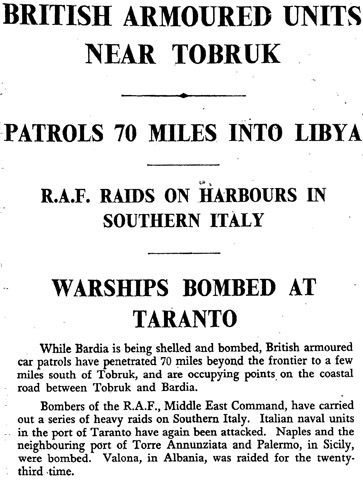
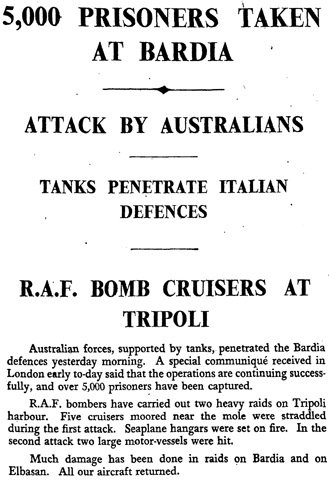
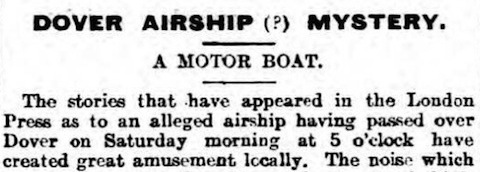
Pingback: Airminded · Saturday, 4 January 1941
Two views of the ground opened up around St. Paul’s:
Tim Powers, in his secret history/espionage/Kim Philby novel Declare talks about the rare flowers that come up there in the spring, having not bloomed in Britain in ages. They go on to play a more-than-incidental role in the plot.
And Connie Willis, in All Clear, has one of her time-travelling characters compare the empty spaces of early 1941 (favourably) to the parkades that he saw in the 1990s. But I shouldn’t say more, as everyone must go out and buy copies of All Clear, and Blackout.
Glad to see the British belief in German technological brilliance coming through so strongly: invisible and silent bombers, and silent speedboats!
I suppose there wouldn’t have been any point in building a fleet of invisible speedboats, as the defenders would have simply fired at the empty space in front of the stern wash?
Really, was this nonsense written up in a manner that implied people should take it seriously?
Is there – being a little more realistic – an explanation in the diesel engines of E-Boats being less noisy than the petrol engines of MTBs?
Hey, if Wonder Woman can have an invisible plane, is it so unlikely that the Nazis could develop one?
The pilots might have been upset at having to wear bustiers, though.
If the aircrew had been ordered to wear uniforms more fitting in a Weimar Gay Bar, they’d surely have demanded solid-sided planes to hide their blushes?
Neil:
The story was presented fairly straight, with just one or two sceptical asides (e.g. right at the end there was something like ‘– if you believe it.’ My feeling is that it was thought too ludicrous to require much comment, or perhaps The Times was hedging its bets in case it turned out to be true?
Pre-war the theme of silent bombers cropped up relatively often in both fiction and non-fiction (invisibility less so). Particularly since sound was (publicly) the only known way to detect bombers at a distance, the possibility of silent or at least relatively quiet engines added to the threat.
The was an ‘invisible’ Great War German bomber, of course. Now, where did I last see it?…
No one offering sightings of the invisible bomber? Obviously a success then. Except for its effectless bombs, I suppose.
A bit more seriously, if you did sign up in 1940, there was a good chance you’d be flying Battles, but thankfully not in combat – but during training, mainly for gunnery. There were a lot used for training in Australia and Canada by then, including some giving us our only colour footage of the type in Captains of the Clouds. One survives in the Canadian Air & Space Museum collection with a Blenheim-style Bristol turret amidships. There were other close escapes: the Battle was (seriously) offered by the British as a type for RAAF expansion pre-war. While the Wirraway wasn’t a better combat type, it was at least a better trainer.
The city of Bremen was bombed on 2/3 Jan. 1941. On some places the clouds were 10/10 and other targets were bombed.
In the morning of 3/1 07:30 the city of Assen was bombed with 2 brisant
bombs and many incendiaries. Seven persons killed and one severely wounded.
I would like to know: were the pilots out of direction?
was the Railway junction the target?
What was bomber type?
What squadron it belonged too?
Thank you so much for your help
Will Arents
Will:
Unfortunately I am not the best person to ask about Bomber Command operations — it’s not my area of expertise. However, looking at the night of 2/3 January 1941 in Martin Middlebrook and Chris Everett, The Bomber Command War Diaries: An Operational Reference Book, 1939-1945 (Hersham: Midland Publishing, 2011 [1996]), 114, the main raid that night was on Bremen (Hampdens, Wellingtons and Whitleys), but there were also ‘small raids to Emden and Amsterdam’. It would seem likely that the bombs which fell on Assen were associated with the Amsterdam raid, but I can’t be sure from this information. As to whether the attack was intentional, again I can’t be sure, but navigation in these night raids was extremely erratic, particularly at this stage of the war. Middlebrook and Everett also note that two OTUs (Operational Training Units) were in action that night, which again seem like likely candidates for the small raids, and it’s easy to imagine that they would not be particularly accurate navigators. I hope that helps.
Hi Will, best place for that kind of question, beyond published details that Brett’s shared, is the RAF Commands forum. You have to join, but there are many selfless experts there.
URL: http://www.rafcommands.com/forum/index.php